By Russ Ouellette
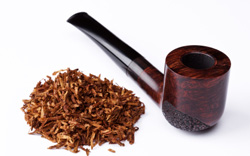 Some people will say "That car is red." while others will say that it’s scarlet, maroon, candy-apple metallic. What’s this got to do with adjusting a tobacco blend? Well, one of the common requests I get is to make a blend sweeter. That helps, but not as much as you might believe. What kind of sweet does the person want? The stinging sweetness of a lemon Virginia? The warm, brown-sugar sweetness of a toasted black Cavendish? The candy-like sweetness of an aromatic? This is why the technical end of adjusting a blend can be difficult.
Some people will say "That car is red." while others will say that it’s scarlet, maroon, candy-apple metallic. What’s this got to do with adjusting a tobacco blend? Well, one of the common requests I get is to make a blend sweeter. That helps, but not as much as you might believe. What kind of sweet does the person want? The stinging sweetness of a lemon Virginia? The warm, brown-sugar sweetness of a toasted black Cavendish? The candy-like sweetness of an aromatic? This is why the technical end of adjusting a blend can be difficult.
What I’ll try to do is to give you some basic ideas on how to work with your tobaccos to arrive at something closer to your wishes.
Let’s look at my Louisiana Red. It’s a Virginia/Perique blend made of two different red Virginias. One is pretty straight-forward, while the other is processed and matured to give it a sweet and sour tang and then it’s fortified with Perique.
The result is a medium-strength tobacco with a bit of fruitiness about it, and a little fig-like bass note.
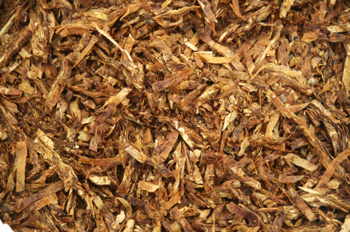
If you want to accentuate the fruit-like aspect, yellow Virginia will give you a sharp and somewhat acidic sweetness.
If you’d like to mellow the blend while maintaining the sugariness, a toasted (unflavored) black Cavendish will do so nicely.
If you’d like a hint of chocolate or cherry along with additional sweetness, then the use of a flavored aromatic will do the job.
If you’d like to lighten the blend, more of the regular red Virginia will do that, or you could use some white Burley, but that will add a bit of nuttiness (like a walnut) as well.
Dark Burley will add a spicy note and maybe a touch of a cigar-like flavor along with an additional nicotine wallop.
More Perique will maintain the flavor, but will add more depth and will add some dried fruit to the mix. Latakia will add a smokiness and will slow the burn down a bit.
Orientals could make it sweeter, more floral or add a musty hint.
So, to recap–
- Virginias– Yellow will add a citrusy, acidic sweetness. Red will add a bread or yeast-like toastiness and brown adds a mildly sweet earthiness.
- Burley– White Burley is rather neutral will a little nutty note, while the darker strains are tangy, spicy and cigar-like and contain a fair amount of vitamin N.
- Orientals– These vary the most in terms of flavor. Some are sweet and floral or deep and musty. Due to their more pronounced flavor, in many cases, a little can go a long way.
- Latakia– Adds a smoky, leathery flavor and aroma while helping cool the smoke down a bit. Used lightly in the background, it can add depth.
- Perique– Has sweet elements (like dried fruit) and a hint of pepper, so it can add spice. Another remarkably cool-smoking tobacco, it can help slow down the burn rate of a blend.
- Aromatics– Flavored tobaccos will add whatever flavorings have been used, but sometimes these tobaccos, when combined with straight blending components, will produce unexpected results. I tried a vanilla-type flavor to top a Perique blend and it wound up smelling and tasting like cinnamon.
Beside using other tobaccos to change an existing blend, the following can have an impact on the smoking characteristics of a blend-
- Aging– Aging Virginia-based blends will help develop their natural sweetness, especially if kept in air-tight storage with a bit of air in the container. Latakia blends will benefit only if you find the flavor harsh or overpowering. Time has a way of mellowing the strength of Latakia.
- Pressure– Most people think that pressing tobacco is something that only a manufacturer can do, but the truth is, if you have access to a vacuum sealer, you can do a pretty good job of making a cake. Put the tobacco in a sealer bag and heat it for a minute or so in a microwave and then vacuum seal it while pressing down on the bag. Give it 24 hours or so before opening and slicing into strips. Pressure has the effect of marrying flavors more rapidly and completely while bringing out more depth, and in some cases, sweetness.
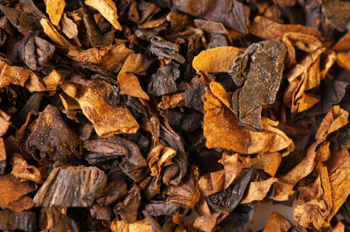 When talking about adjusting a blend, the keyword to me is light-handed. Always start by adding the smallest amount of the new tobacco that will have an impact, since you can always add more later on, but you can’t remove what you’ve already added.
When talking about adjusting a blend, the keyword to me is light-handed. Always start by adding the smallest amount of the new tobacco that will have an impact, since you can always add more later on, but you can’t remove what you’ve already added.
From the time we were children, there have been authority figures in our lives who have said to us, "If you don’t know, ask." If you’re not sure what move to make, there’s a wealth of information in books, magazines and online to refer to. And don’t forget one of your best resources- your tobacconist. Whether you’re dealing with your local B&M proprietor or with an e-tailer, you have the right to expect assistance from them when you’re trying to tweak your blend. After all, they’re probably going to be the ones selling you the components, so asking for some input is reasonable.
I routinely field a couple of dozen phone calls and double that number of emails each week asking for this kind of help. I can’t speak for anyone else, but I like answering these questions as it gives me a chance to stretch my problem-solving chops. If you can’t seem to find a solution, use the contact info at the end of this article to get in touch with me, and I’ll be glad to see what I can do. I may not have all the answers, but I have a good idea of who might know, and I’ll track down the info, if possible.
Also, work in the smallest batches you realistically can. This way you waste a bare minimum of tobacco if the batch turns out to be a disappointment.
Whatever you do, have fun with it. And, remember that the only person you have to satisfy is yourself.
|
Russ Ouellette is the blender/creator of the Hearth & Home series of tobaccos for Habana Premium Cigar Shoppe and www.pipesandcigars.com in Albany, NY. He has been a pipe smoker and blender for over 30 years, and enjoys feedback from the pipe smoking public. You can reach Russ at russo@pipesandcigars.com or by calling 1-800-494-9144 on Monday, Wednesday and Thursday from 9 am to 5 pm and Friday from 1 pm to 5 pm. |



.gif)
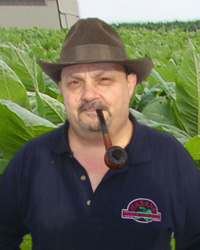
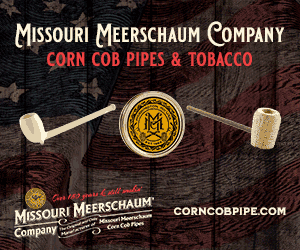








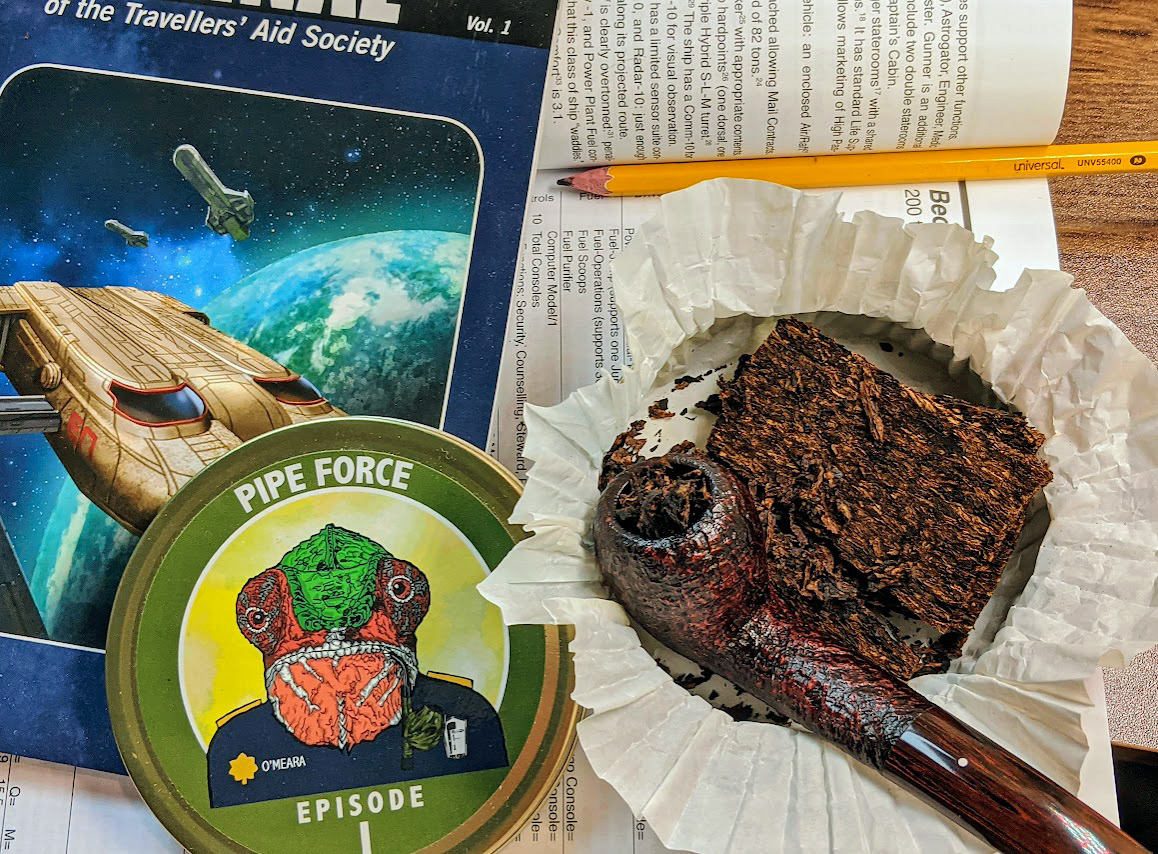




Russ, I recently infused some of your fantastic Egg Nog with 18 year old Flor de Cana rum. I just left a small bowl of this rum which has a pervasively sweet aroma inside a container with the tobacco for two or three days, with the lid on of course. Then I transferred the tobacco to a mason jar and left it there for about five days or more. The result is incredible. It seems the more aged the rum the better this type of minimalist infusion works. This process was suggested by my good friend Rob who, like me, is a great fan of your H&H blends.
This i a great example of what can be done at home with minimal equipment. This method of flavoring is often referred to as infusing. If you want, do the same thing with the rum heated up a bit, or with the container in a warm place. It helps release the fumes.
Thanks for the nice comments about H&H, and we’ll have some interesting news to announce soon!
Russ
Thanks for the insight into the various characteristics of component tobaccos. I’m sure this article will be a boon to the DIY’ers in our hobby. I may try a little tweaking myself, just as soon as I’ve sampled all the professionally blended tobaccos already available. 🙂
You’re very welcome on the comments; just a statement of objective reality facts really. And thank you for the warm rum tip. Will be attentive to developments in the interesting news department. Best regards to you Russ.
Very enlightening Russ. Particularly enjoyed the nuances by the tobaccos in the same catagories, lemon Va, etc. My tweaking is usually adding PA to lighten up a blend. have had great results adding PA to Palladin Black cherry, Wine berry, etc. Don’t want to mess up my “good” blends.
Russ, I’ve been trying a 50-50 mix of your Anniversary Kake and Trout Stream. The result is a more sweet and sour version of Luxury Bullseye or Davidoff Flake. I’ve found that both of these benefit from being quite “fresh” the less dried out, the better.